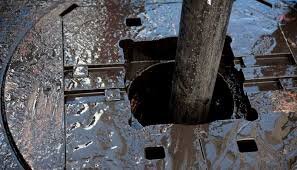
Drilling fluid performs many functions while drilling, but one of the most important roles is maintaining wellbore stability. In a recent blog Using Drilling Fluid Additives to Increase Performance in HPHT Wells, the Search Continues, we mentioned factors to be considered in selecting drilling fluids which include formation geology, temperature and pressure; expected drilling performance; and the type of rig and any additional fluid-related equipment on site. Based on the above criteria, and other economic and environmental factors, operators typically select water-based drilling fluids for their drilling needs. Though research suggests that water-based fluids are selected by operators more than 75% of the time certain drilling situations benefit from choosing non water-based drilling fluid alternatives. These alternate options include oil and synthetic-based fluids, and air drilling.
Oil-based fluids
In high-pressure, high-temperature (HPHT) drilling environments more expensive oil-based fluids are typically chosen due to their improved thermal stability. Oil-based fluid systems are stable to well temperatures just under 550°F while water-based polymer fluid systems are used typically to 400°F. Until thermal stability can be improved in water-based fluids, oil-based fluids will remain necessary in HPHT situations.
As the name implies, oil-based drilling muds are built with petroleum fluid bases; most often diesel, but can also include kerosene, fuel oil, crude oil and mineral oil. In addition to their stability in high temperature environments, oil-based muds are selected for their lubricious properties which improve drilling efficiency by reducing BHA drag.
According to Wikipedia’s Oil-based mud page, these fluids are generally worth the cost when drilling through troublesome shales, water-soluble zones and producing zones.
Besides the increased cost, usage of oil-based muds introduces other environmental considerations to well planning such as increased cuttings transportation, fluid waste services disposal and oilfield trucking fees. Oil-based fluids are also known to interfere with formation and cuttings analysis, especially during exploratory drilling.
Synthetic-based fluids
Synthetic fluids were designed and developed to perform like an oil-based fluid while maintaining the environmental qualities of water-based fluids. As an example, synthetic fluids may contain esters found in palm or coconut oil as part of their base. A major disadvantage to widespread usage of synthetic base fluids is their higher per-barrel cost in comparison to the alternatives, oil-based included. However, as a true measure of cost, operators should also consider the reductions associated with storage, haul off and disposal. Synthetic–based fluids are most often selected for use in offshore drilling programs. However, neither oil-based muds nor synthetic-based muds can be discharged into the ocean. Cuttings drilled with synthetic-based mud may be discharged if most synthetic fluid has been removed. Cuttings drilled from oil-based fluids may not be discharged.
Air drilling
When water, oil or synthetic-based fluids are not ideal for drilling, such as in situations where significant fluid loss to the formation is expected, drillers use air-only drilling techniques commonly referred to as air-drilling.
Air drilling is an underbalanced technique in which gases cool the drill bit and lift cuttings. Instead of drilling fluids, high volumes of low-pressure air circulate cuttings. High volume air compression requirements are critical to the success of this drilling technique and formation geology must be considered before choosing to drill with air.
Specific methods of air drilling include dust, mist, foam, aerated and nitrogen drilling. While air drilling has its advantages, mainly reduced cost and increased penetration in certain formations, it has numerous disadvantages, including the potential for fire. Some operators use liquid and pure nitrogen gas to mitigate fire risk associated with air drilling.
Baker Hughes notes two other significant disadvantages to air drilling in the company’s oilfield glossary, “the inability to control the influx of formation fluids into the well bore and the destabilization of the borehole wall in the absence of wellbore pressure typically provided by liquids.”
Don’t forget to check out our helpful Five Useful Online Drilling Fluid Resources blog for more fluids related information and resources.
Panther Fluid Management has the experience to assist your company with all of its solids control and fluid disposal needs. Our system designs are backed by years of experience and have consistently lowered overall mud costs for clients. We consult with the operator to design the best fluids system for each well; including everything from discrete services like mud tanks and shaker screens to fluids engineering to complex closed-loop systems for solids control to haul-off and disposal. More importantly, we understand the total fluids life cycle and can prepare for many contingencies based on well conditions.

